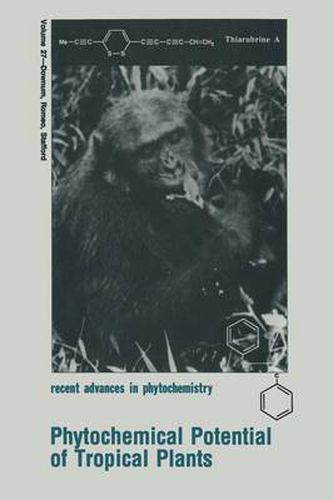Readings Newsletter
Become a Readings Member to make your shopping experience even easier.
Sign in or sign up for free!
You’re not far away from qualifying for FREE standard shipping within Australia
You’ve qualified for FREE standard shipping within Australia
The cart is loading…






This title is printed to order. This book may have been self-published. If so, we cannot guarantee the quality of the content. In the main most books will have gone through the editing process however some may not. We therefore suggest that you be aware of this before ordering this book. If in doubt check either the author or publisher’s details as we are unable to accept any returns unless they are faulty. Please contact us if you have any questions.
Throughout the tropics, vast areas of rainforest and other biologically diverse lands are being cleared for agricultural or related uses. Rainforests, the most dramatic example of tropical habitat destrucLion, are estimated to be disappearing at the rate of up to 20.4 million hectares per year world-wide (based on FAO estimates; see World Resources 1990-1991, Oxford University Press) more than 2% of the total area covered by tropical rainforests per year. Destruction of these complex habitats results in the irreversible loss of both plant and animal diversity, and dramatically illustraLes the need to investigate these threatened species for potentially useful constituents-especially the identification and characterization of novel biologically-active phytochemicals with pharmacologiical and/or pesticidal properties. This volume is based on papers presented by invited speakers at an international symposium entitled Phytochemical POlential of Tropical Plants: held in conjunction with the second joint meeting of the Phytochemical nd Societies of Europe and North America, as well as the 32 annual meeting of the latter society. The meeting was held at the Deauville Hotel, Miami Beach, Florida, USA from August 8-12,1992. One hundred and twenty-five participants from more than 20 countries attended this meeting.
$9.00 standard shipping within Australia
FREE standard shipping within Australia for orders over $100.00
Express & International shipping calculated at checkout
This title is printed to order. This book may have been self-published. If so, we cannot guarantee the quality of the content. In the main most books will have gone through the editing process however some may not. We therefore suggest that you be aware of this before ordering this book. If in doubt check either the author or publisher’s details as we are unable to accept any returns unless they are faulty. Please contact us if you have any questions.
Throughout the tropics, vast areas of rainforest and other biologically diverse lands are being cleared for agricultural or related uses. Rainforests, the most dramatic example of tropical habitat destrucLion, are estimated to be disappearing at the rate of up to 20.4 million hectares per year world-wide (based on FAO estimates; see World Resources 1990-1991, Oxford University Press) more than 2% of the total area covered by tropical rainforests per year. Destruction of these complex habitats results in the irreversible loss of both plant and animal diversity, and dramatically illustraLes the need to investigate these threatened species for potentially useful constituents-especially the identification and characterization of novel biologically-active phytochemicals with pharmacologiical and/or pesticidal properties. This volume is based on papers presented by invited speakers at an international symposium entitled Phytochemical POlential of Tropical Plants: held in conjunction with the second joint meeting of the Phytochemical nd Societies of Europe and North America, as well as the 32 annual meeting of the latter society. The meeting was held at the Deauville Hotel, Miami Beach, Florida, USA from August 8-12,1992. One hundred and twenty-five participants from more than 20 countries attended this meeting.